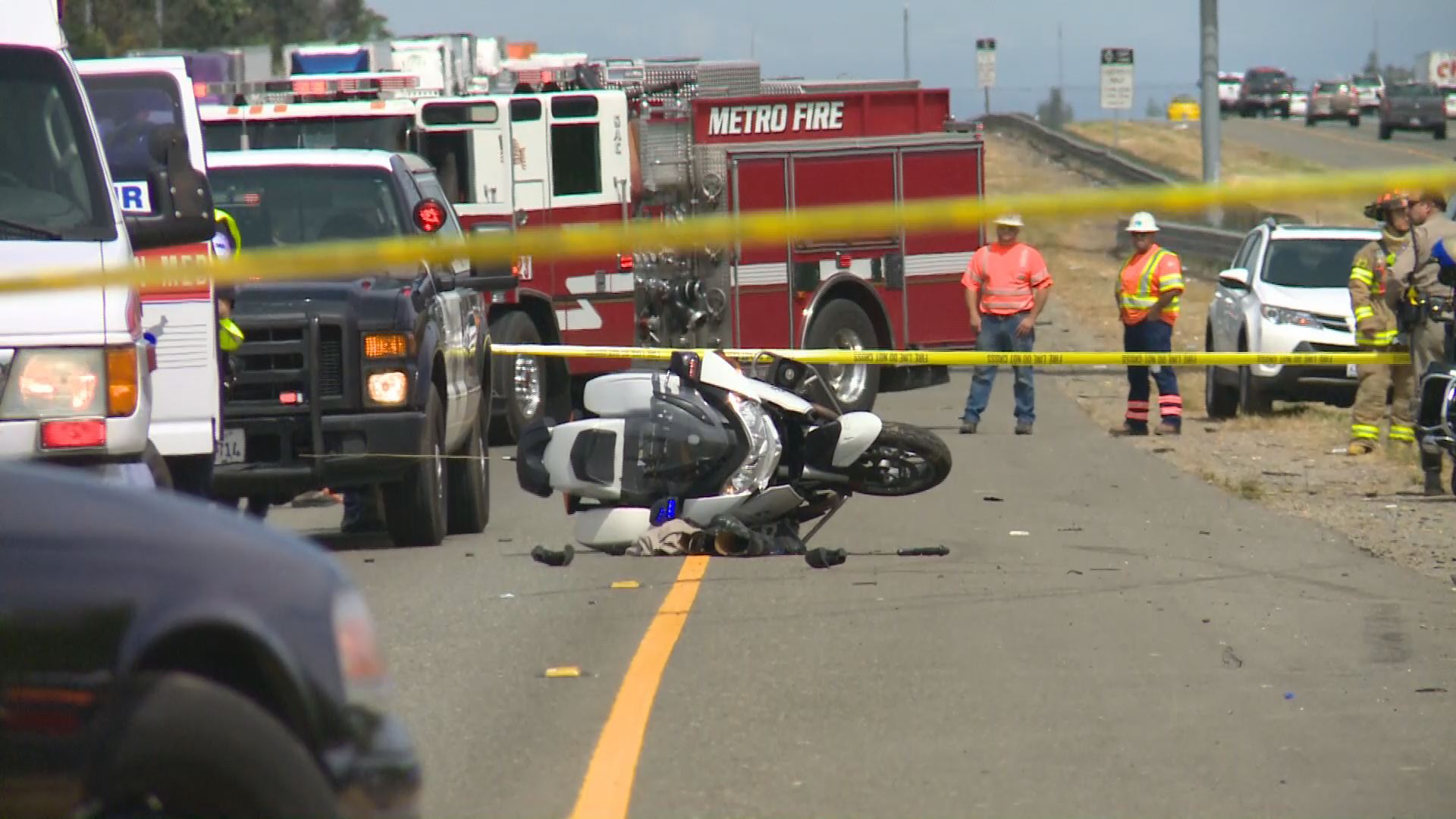Officer Dean Beattie was making a pass around a slow-moving truck.
Sergeant John Lee Steel was hit by a driver who fell asleep at the wheel.
Officer Lucas Chellew crashed while pursuing a fleeing suspect.
While the circumstances of each officer’s death are unique, all share one thing in common: they happened on the backs of motorcycles.
Of the 233 California Highway Patrol officers killed in the line of duty since 1923, more than a third have died in motorcycle wrecks, according to the Officer Down Memorial Page, Inc., a non-profit organization that monitors law enforcement deaths in the United States.
Chellew, 31, who was involved in a fatal wreck Feb. 22 while chasing a fleeing suspect, was the 82nd CHP officer to be killed on a motorcycle in the line of duty, a tally that nearly matches the total number of the agency’s officers killed by gunfire and car crashes combined. And, compared to statewide law enforcement agency statistics, CHP has accounted for 43 percent of police motorcycle deaths in California since 1923.
Many of the fatal wrecks occurred from 1923-1969, when all CHP cadets were ushered through motorcycle training, and the majority of the department’s vehicles were motorbikes, CHP officials said. In the late 60s, the department refocused and improved their training techniques, overwhelming decreasing motorcycle officer deaths.
These numbers may seem extraordinary, but it’s difficult to compare figures across jurisdictions without taking into account factors such as the size of the department, number of motor units deployed, and even the weather, said Jim Bueermann, President of the Police Foundation, a Washington, D.C.-based police research think tank.
Bueermann, a retired chief of the Redlands Police Department, told ABC10 in a phone interview that it’s not uncommon for motor vehicle accidents, including motorcycle wrecks, to be one of the leading causes of death for law enforcement officers, which also corresponds with the Center for Disease Control’s statistics on the leading causes of death for all Americans.
To put the numbers into perspective, from 2010-2015, the Insurance Institute for Highway Safety recorded 26,819 motorcyclist deaths, at least 29 of which were on-duty police officers.
Most of CHP's fatal motorcycle wrecks were ultimately ruled as accidents, according to ODMP, but more than half of the agency's vehicle pursuit deaths involved motor unit officers.
A report released in 2004 by the Police Policy Studies Council found "officers, violators and the public are frequently at considerable risk" during vehicle pursuits. Couple that with the vulnerabilities officers on motorcycles are already exposed to and there's even a greater potential for serious injury or death.
"Most agencies have policies, if not prohibiting, then gravely discouraging their (motorcycle) officers from engaging in pursuits in all but the most extreme circumstances," Bueermann said.
The California Department of Justice's Law Enforcement Policy & Procedures Manual makes no distinction between motorcycle officers and officers in patrol cars when it comes to engaging in vehicle pursuits, though the manual does acknowledge pursuits "expose innocent citizens, law enforcement officers and fleeing violators to serious injury or death," and that "no agent or supervisor shall be criticized or disciplined for deciding not to engage in a vehicular pursuit because of the risk involved."
In 1992, the Miami-Dade Police Department switched to a “violent felony only” pursuit policy, which decreased the number of pursuits by 82 percent the following year, according to a comprehensive study of police pursuits published by the National Institute of Justice.
On Feb. 22, CHP Officer Lucas Chellew was pursuing a suspect on a stolen motorcycle when he lost control of his own motorbike and crashed, a press release from the department said. Alberto Quiroz, 26, of Sacramento, who prosecutors allege was riding the stolen motorcycle, was later arrested and charged with felony evading, felony vehicle theft, possession of a stolen vehicle and felony resisting arrest.
The crash that killed Chellew, and the reasons why he initiated the pursuit to begin with, are still under investigation.
In the National Institute of Justice study -- which did not distinguish the types of vehicles used in pursuits -- 65 percent of officers interviewed said they would engage in a vehicle pursuit of a stolen vehicle under low-risk conditions (clear weather, minimal traffic), while only 37 percent of officers said they would engage in the pursuit if conditions were considered high-risk (heavy traffic, poor road conditions, inclement weather).
Despite the risks motorcycle officers face, Bueermann said they're often necessary to access scenes that patrol cars can't reach quickly, and that most officers who ride would tell you they'd never get back in a patrol car.
"There's a great deal of freedom...(motorcycles are) a part of American policing culture," Bueermann said. "And in some way or another, they probably always will be."


